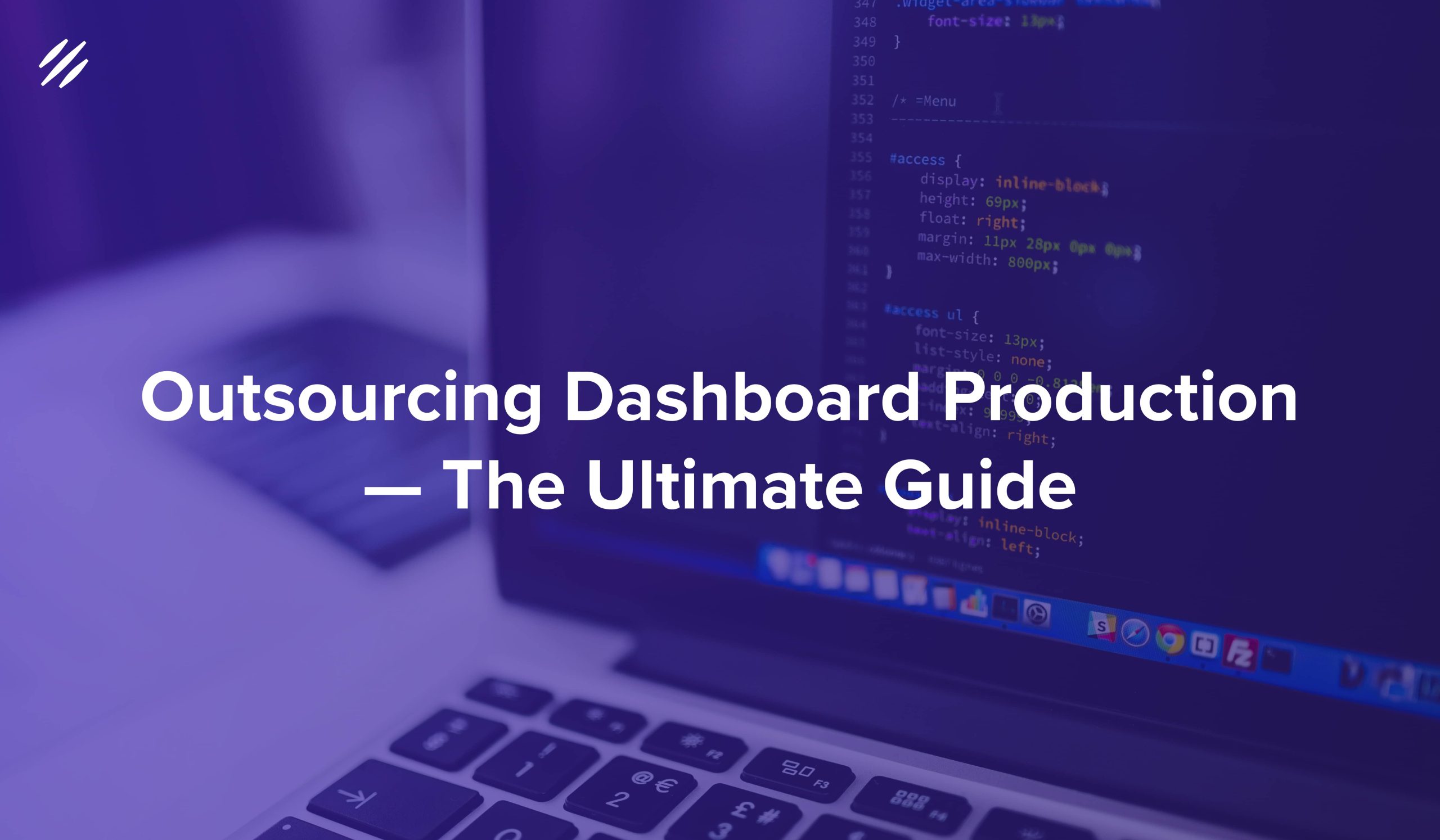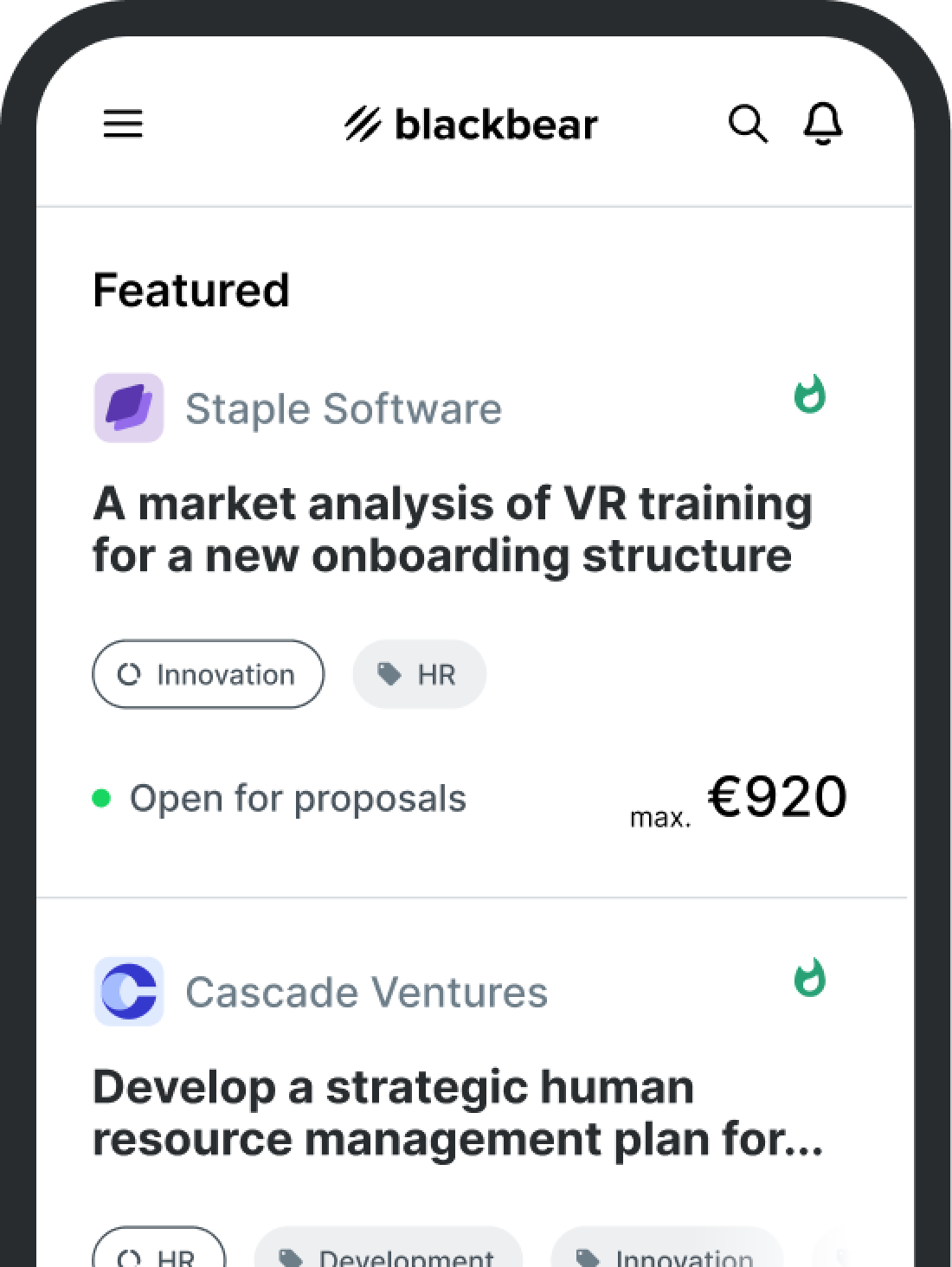The Ultimate Guide to Outsourcing Dashboard Production
Outsourcing dashboard production can be a game-changer for your organisation, enabling you to harness the power of data without the hassles of in-house development. Here’s how.

In today's data-centric business landscape, having the right information at your fingertips is crucial for making informed decisions. However, creating and maintaining effective data or performance dashboards in-house can be a daunting task. This is where outsourcing dashboard production can be an effective solution.
In this article, we'll explore why outsourcing dashboard production can be a game-changer for your organisation, enabling you to harness the power of data without the hassles of in-house development.
This guide consists of the following:
- What Is a Performance Dashboard?
- Why Outsource Dashboard Production?
- Finding the Right Dashboard Production Partner
- Planning Your Dashboard Project
- Collaborating Effectively With an Outsourced Team
What Is a Performance Dashboard?
A performance dashboard is a visual reporting analytics tool utilised to measure, monitor, and manage the efficacy of day-to-day business processes. It allows for cohesive real-time analysis of datasets to help improve business intelligence and overall performance.
Why Outsource Dashboard Production?
Beyond cost savings, outsourcing dashboard production brings specialised expertise to the table, ensuring your performance dashboards are not just functional but insightful too.
Flexibility is another key advantage, allowing you to scale up or down as needed. So, whether you're a startup with limited resources or an established enterprise, outsourcing dashboarding offers a competitive edge.
Industry statistics and success stories underscore its benefits, making it a smart move in an increasingly data-driven world.
So, why outsource dashboard production? Simply put, it streamlines the process, enhances quality, and empowers your organisation to make data-backed decisions efficiently.
Finding the Right Dashboard Production Partner
Choosing the right dashboard production partner is akin to choosing a trusted ally in your data journey. It's about finding a collaborator who not only possesses the technical prowess needed for effective data visualisation but also resonates with your organisation's vision.
Begin by assessing their expertise through portfolio scrutiny and references.
It’s essential to consider all outsourcing options available — freelancers, agencies, or offshore teams – weighing their strengths against your project's scope.
Goal alignment is key at this stage, so prioritise partners who actively engage with your objectives. Ultimately, the ideal partner is more than a contractor; they're a catalyst for turning data into actionable insights, propelling your brand or business forward.
Planning Your Dashboard Project
Planning your dashboarding project is the crucial first step in ensuring its success. Think of it as laying the foundation for a well-structured and effective data visualisation tool.
- Start by defining clear project objectives — what do you want to achieve with this dashboard? Identify the key metrics and data sources that are essential for your business needs.
- Scope matters, too. Determine the boundaries of your dashboarding project and what features and functionalities are a must-have versus nice-to-have. This step is essential in setting realistic expectations for both your team and your chosen dashboard production partner.
- Budget and timeline are critical aspects of your plan. Allocate your resources wisely, keeping in mind that quality often comes with a reasonable investment. Be realistic about the time needed for development, testing, and deployment to avoid undue pressure on your team and partner.
- A comprehensive project brief is your roadmap throughout this journey. Detail your project's goals, scope, budget, and timeline, as well as any specific design preferences and data sources. A well-structured brief serves as a clear guideline for your dashboard production partner, ensuring everyone is on the same page.
In essence, planning your dashboard project is essential for success. Take the time to define your objectives, scope, budget, and timeline, and document them thoroughly in a project brief. This initial investment in planning will pay off in the form of a well-executed, impactful dashboard that serves your business's needs effectively.
Collaborating Effectively With an Outsourced Team
Collaborating effectively with an outsourced team is the linchpin of a successful dashboard project. Here are a few tips to help ensure a positive collaborative experience:
- Open and clear communication channels are paramount. So it’s, therefore, essential to establish regular update and feedback mechanisms. This includes making use of project management tools and video conferencing platforms to bridge geographical divides.
- Treat your outsourced team as an extension of your in-house staff, fostering a sense of teamwork and shared goals.
- Embrace flexibility to accommodate different time zones and cultural nuances, creating an environment where ideas flow freely.
With effective collaboration, your outsourced team becomes a strategic partner, and together, you can navigate the complexities of dashboard production. Below are the main things to consider when outsourcing your dashboard production.
1. Data Security and Confidentiality
Safeguarding your organisation's sensitive information is non-negotiable. Start by ensuring your outsourcing partner signs a non-disclosure agreement (NDA) that legally binds them to confidentiality.
Additionally, verify that they comply with data protection regulations relevant to your industry and region.
When sharing data, use secure channels and consider anonymising or de-identifying sensitive information whenever possible.
You may want to prioritise regular security audits and risk assessments as well to maintain the integrity of your data.
By addressing data security and confidentiality diligently, you can confidently reap the benefits of outsourcing while safeguarding your most valuable asset—your data.
2. Managing the Dashboard Production Process
Managing the dashboard production process involves a systematic approach that encompasses stages from data gathering and design to development and testing.
Project management plays a pivotal role in overseeing the outsourcing process, ensuring tasks are on track and issues are promptly addressed. With the right outsourcing managing your dashboard production, however, processes like
tracking progress, conducting regular check-ins, and enforcing quality control measures will all be taken care of for you.
A well-managed dashboard production process not only ensures the project stays on schedule and within budget. It also results in a high-quality dashboard that aligns precisely with your brand’s objectives.
3. Review and Deployment
The review and deployment phase in dashboard production is the critical juncture where all your hard work comes to fruition.
Before deploying your dashboard, thorough testing and review are essential to iron out any kinks. You’ll not only have to do a Quality Assessment (QA) but implement User Acceptance Testing (UAT) too. Although both are important, they are quite different.
A QA will determine if there are any software bugs that need to be fixed and is performed by the development team. UAT feedback, however, is given by actual product users and ensures that the end-user experience is optimised.
Smooth deployment involves user training and comprehensive documentation to ensure that your team can harness the dashboard's full potential. In other words, this phase is the moment of truth. This is where your data visualisation tool transitions from a concept to a powerful asset, empowering your organisation to make informed decisions effectively.
4. Continuous Maintenance and Improvement
Continuous maintenance and improvement of your dashboard are fundamental to its long-term value. Beyond the initial deployment, it's essential to keep a vigilant eye on its performance and user satisfaction.
Regularly monitor data sources for accuracy and relevance, addressing any discrepancies promptly. User feedback is invaluable in identifying areas for enhancement. This allows you to prioritise improvements based on business needs and user requirements. It also ensures your dashboard remains a dynamic tool that evolves with your business's changing demands.
By committing to ongoing maintenance and improvement, you can maximise the Return on Investment (ROI) of your dashboard, keeping it a reliable and indispensable asset for data-driven decision-making.
Final Thoughts
Outsourcing dashboard production isn't just a cost-saving strategy; it's a strategic move that empowers businesses to navigate the complex world of data with finesse. By partnering with outsourcing experts like blackbear, you can ensure that your data dashboards are not only functional but cutting edge. The flexibility it offers allows you to scale your dashboard needs according to your requirements, making it a pragmatic choice for businesses of all sizes.
As we move forward in this data-driven era, outsourcing dashboard production remains a valuable tool to streamline operations, enhance data quality, and, ultimately, drive business success. Need help outsourcing your dashboard production project? Check out our free demo today!
